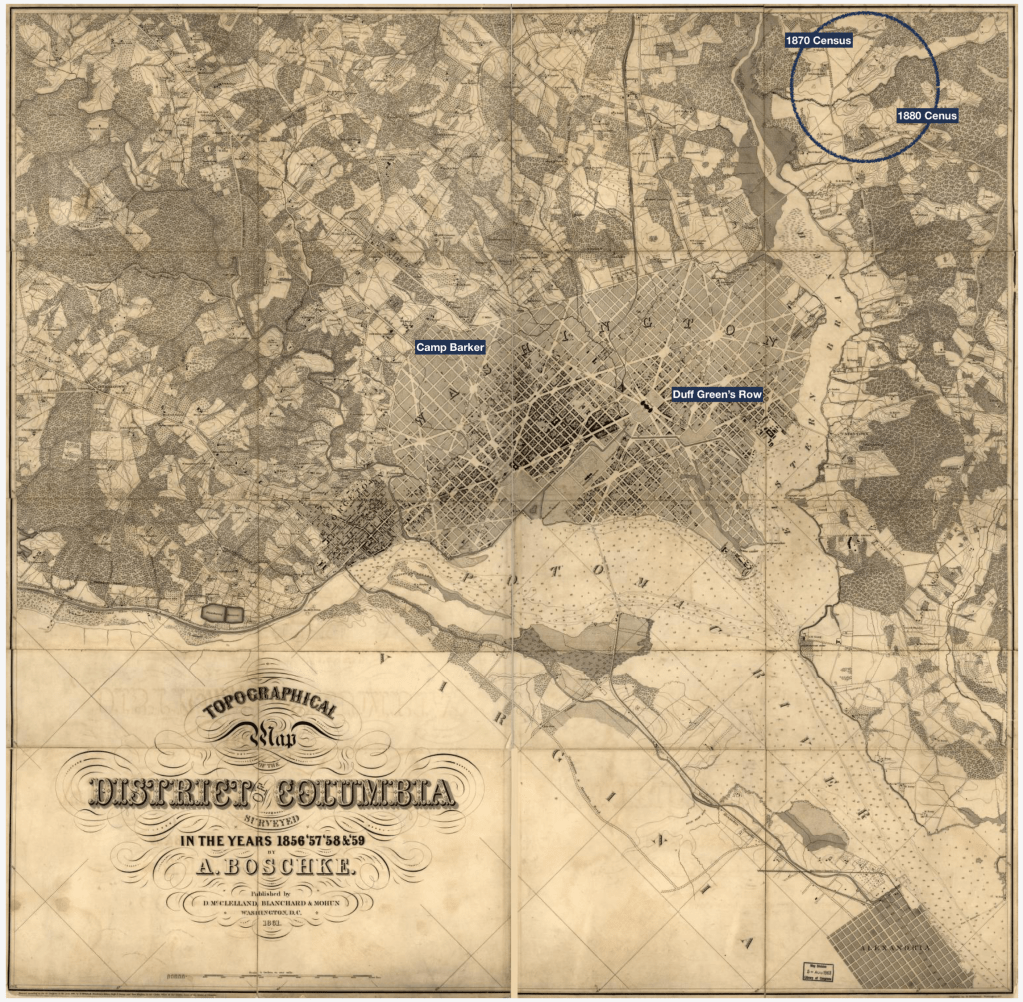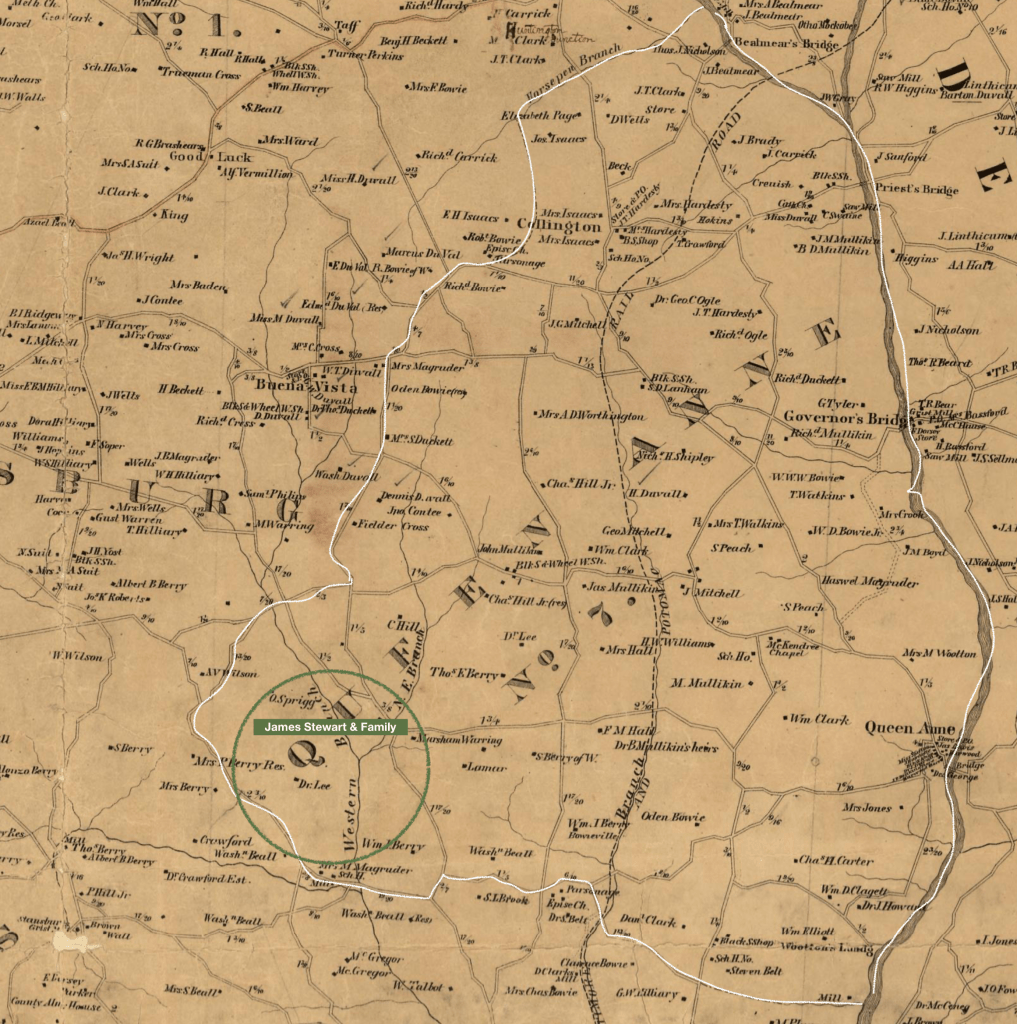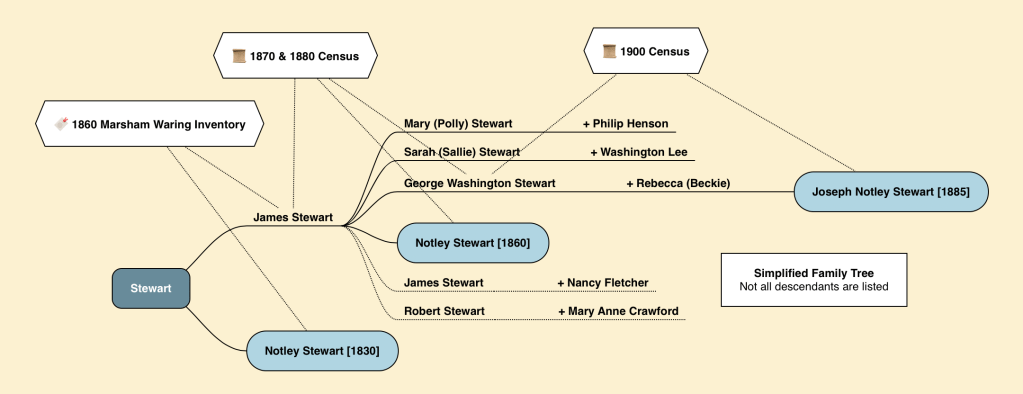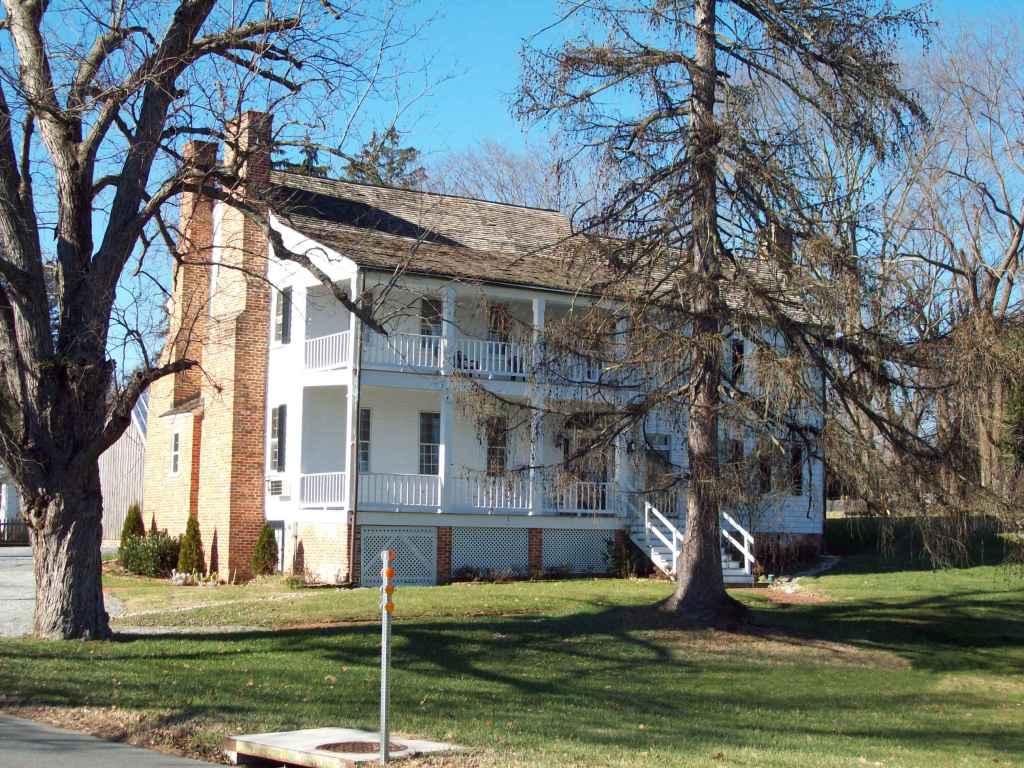This post explores the possibility that Robert Stewart is the patriarch of branch of the Stewart Family Group enslaved by Marsham Waring near Buena Vista and Woodmore along the border of Bladensburg and Queen Anne Districts in Prince George’s County.
Background Information
Marsham Waring died in 1860 and in the inventory of his estates are three adult males named James, Patrick and Notley. The men are enumerated with round ages of 50, 40, 30, suggesting that the listed ages are not precise ages, rather estimated. After the Civil War, the heirs of Marsham Waring submitted compensation lists to the 1867 Commission on Slave Statistics in hopes of being compensated for the emancipation of their “personal property”. While compensation never occurred, the lists provide the given and family name of people enslaved; the three men are listed with the family name Stewart.
During the Civil War, Patrick and Notley Stewart escaped Prince George’s County for the District of Columbia, where slavery had been abolished in 1862 with their extended kin group. James Waring, the son of Marsham Waring, filed an affidavit seeking the return of the refugees to his captivity in May 1862.
The relationship between James [est. 50 | 1810] and the other two men, Patrick and Notley, has been ambiguous due to a lack of definitive records stating a relationship between the men and due to the rounded ages. The thirty year gap between James and Notley leaves open the possibility of a son-father relationship, brother-brother relationship, uncle-nephew relationship, and no doubt other less likely relationships.
Post-Civil War records for Patrick Stewart are ambiguous as there are multiple Patricks with a wide range of birth years. A post seeking to differentiate between the Patricks and connect them with the appropriate branch of the Stewart Family Group is forthcoming.
White Marsh Baptism
Notley Stewart was baptized in 1829 by the Jesuit Priests at White Marsh, a plantation maintained by the Catholic Church near Priest’s Bridge in Queen Anne District, Prince George’s County.
Notley, son of Robert & Ann, his wife slave of Massin [Marsham] Waring, aged 4 months. Sponsor Amelia. JS
April 19, 1829
The baptismal record identifies the parents of Notley Stewart as Robert and Ann and does not mention James. This record removes the possibility that James is Notley’s father leaving open the two possibilities 1. that James and Notley are brothers, or 2. Robert and James are brothers, making Notley the nephew of James.

The baptismal records cover 1819-1833; they do not include James’ baptismal record as he was born prior to the extant records.
1833 Personal Property Assessment
In 1833, the tax assessors for Prince George’s county compiled a list that included the “Proprietors” Name (property owner) with the names of the people they enslaved and the enslaved person’s assessed property value. These values were determined by their gender and age range. For example, males age 50-60 were assessed at $100 and females age 50-60 were assessed at $60.
Marsham Waring’s property list includes the names of Robert, James, Patrick, and Notley.
| Name | Value | Age Range | Birth Year Range |
|---|---|---|---|
| Robert (Bob) | $100 | 50-60 | 1773-1783 |
| James (Jim) | $400 | 18-30 | 1803-1815 |
| Patrick | $250 | 10-15 | 1818-1823 |
| Robert | $150 | 6-10 | 1823-1827 |
| Notley | $60 | 3-6 | 1827-1830 |
| James (Jim) | $350 | 15-18 or 35-40 | 1815-1818 or 1793-1798 |
James Stewart was enumerated in the 1870 and 1880 US Federal Census. In 1870, he was listed as 63 years old, with an estimated birth year of 1807; in 1880, he was 70 with an estimated birth year of 1810. This allows us to reasonably identify James Stewart as the James (Jim) valued at $400.

Notley’s inclusion in the assessment list is consistent with the information recorded in the White Marsh Baptismal Record; he is valued as a toddler who was born around 1830. His father, Robert from the White Marsh record, is most likely Robert (Bob) valued at $100, as this value allows us to estimate his age as 50-60. The other Robert is valued at $150, allowing for an estimated age of 6-10; he is likely a brother of Notley.
Robert (Bob), between 50 and 60 years old, would have been born during the Revolutionary War (1773-1783). He is old enough to be the father of James, Patrick, Robert and Notley.
At 50-60 years old, Robert (Bob) would already be considered an elderly man. He most likely was no longer used in the fields and instead was laboring as a body servant, gardener or caretaker. As one of the older men on the estate, he was likely a source of stability and wisdom for the younger enslaved family and friends. See Daina Ramey Berry, The Price for Their Pound of Flesh for a discussion of the lives of elderly enslaved people.















